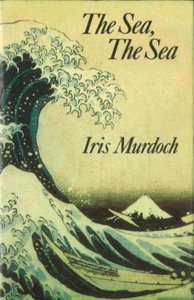“Creative without strategy is called ‘art.’ Creative with strategy is called ‘advertising.’” – Jef I. Richards
The Problem With Most “Good” Marketing Copy”
“Sales been growing amazingly for two years. Now, all of a sudden, they’re flat. Worse, they’re in the red. I’ve looked at the P&Ls and the marketing reports. I’m 90% sure the problem is in the marketing. In any case, something is terribly wrong. And we have to figure it out and fix it fast. This needs your immediate attention.”
This email was sent to me by a client in 2009. At that time, the sender, the founder of the business – an information marketing company – was living abroad. He wasn’t able to come back to the States to try to fix the problem himself, so he was asking me to see what I could do.
I jumped on a plane the next day and spent the flight looking through the numbers. When I arrived, I met with the CEO. We spent the afternoon poring over her marketing campaigns and comparing one to another.
“It makes no sense to me,” she said. “We can’t seem to get a new campaign to work anymore. The backend is suffering, too.”
She was right. During the prior 3 years, sales had skyrocketed. More impressively, profits had more than tripled to more than $8 million.
We looked first at the media she was targeting. My belief is that of the three key factors that affect marketing success – media, offer, and copy – media matters most. You can have great advertising copy and irresistible offers, but if you direct them to the wrong prospects, the results can be close to zero. But when we compared her media buys to those of her competition, there was almost no difference.
It wasn’t the media.
Next, we looked at her offers. Were they perhaps aiming at a cart value that was too high or too low for the market? They were not. Were their terms and guarantees comparable to the competition? They were. Were the offers themselves easy to understand? Yes, they were.
The offers were not the problem.
Could it be the advertising itself?
I considered every campaign she had done in the past several years. It was obvious that Pareto’s Principle was at play here: 80% of the revenues had come from less than 20% of the campaigns. In fact, nearly 80% of the growth in new buyer revenue had come from a single campaign. When that stopped working, everything else did too.
Now we were getting close to the answer. The sudden and steep decline in sales had occurred in a period of time that trailed the descending responsiveness of this single advertising promotion.
They had tried to replace it with something as good or better. More than a dozen different angles had been tested against the “control,” but they all failed.
So, I took copies of the control – that original advertising piece that had worked so well – and all the promotions that had been written to replace it. And I spent the weekend going through them again.
I didn’t actually need the whole weekend to figure out what was going on. The problem was evident in the first replacement piece I studied. The problem was B copy. All the subsequent copy that had been tested was much, much weaker than the control.
B copy is the sort of advertising copy that all marketers are most familiar with. It’s good. It’s solid. It sells benefits, not features. It is written in plain, comprehensible language. It makes big promises, whether explicit or not. And it adheres to the invisible architecture that all good rhetorical writing must adhere to.
B copy works for 80% of the commercial market. It works for brand advertising. It works for B2B (business-to-business) advertising. It works for local and regional advertising. But it doesn’t work in the most competitive markets, which include information marketing (my client’s business).
To achieve sales success in competitive markets, you have to target the right media and present the proven offers, but you must also use A or A+ copy. B copy won’t do it. The advertising piece that had created that three-year sprint of grow was A-level copywriting. Everything else afterwards was B or B+ at best. Not good enough. Not nearly good enough.
That was one problem. But the even bigger problem was this: The CEO couldn’t tell the difference.






